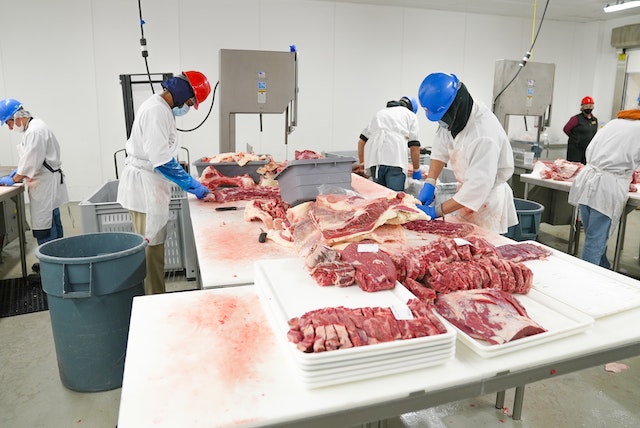
A supply chain is a system of facilities and distribution channels involved in the process of transforming raw materials into finished products. The supply chain for meat processing warehouses is a complex and often lengthy procedure. Several steps are involved in getting meat from the farm to the table, and each stage requires careful coordination. These include receiving raw materials where fresh, frozen, or processed meats are delivered. Once received, meats must be stored properly to maintain quality and safety. It usually involves storing meats at specific temperatures in designated areas.
In addition, when an order for meat is placed, warehouse staff must select the appropriate products and package them for shipment. The finished products are shipped to the customer’s location. To ensure that meat is safe and high quality, processors must adhere to strict guidelines and procedures. In recent years, there has been an increasing focus on using technology to improve the efficiency of supply chains.
The supply chain is a complex network of activities and processes that ensures the efficient flow of goods and services from manufacturers to consumers. One essential component of this intricate web is the co-packer, an indispensable partner for many businesses. A co-packer, short for contract packer, plays a crucial role in the supply chain by providing specialized packaging and production services. Companies often collaborate with co-packers to outsource tasks such as packaging, labeling, and even manufacturing. This strategic partnership allows businesses to focus on their core competencies while relying on co-packers to deliver quality, consistency, and scalability in the production process. In today’s global marketplace, co-packers are integral in optimizing supply chains and ensuring that products reach consumers efficiently and in pristine condition.
Technologies used in the supply chain of meat processing warehouses
Radio-frequency identification (RFID)
These are used to track the movement of animals throughout the supply chain from farms to slaughterhouses to processing plants. It helps to avoid losing them and even enables better and safer management of animals in a supply chain process as a whole.
Sensors
The advancement of technology has allowed different new-age technologies to be used in meat processing warehouses to increase efficiency and productivity. One of them is sensors. They are used to track the movement of meat products throughout the warehouse so that they can be well-tracked and accounted for.
Warehouse management systems (WMS)
WMS is software that helps to control and optimize warehouse operations. It can be used to track inventory levels, manage stock locations, and create pick lists for orders. This technology has improved the efficiency of meat processing warehouses. Utilizing this technology, meat warehouses can operate more efficiently and provide a higher level of service to their customers.
Intelligent Packing systems
Technology has revolutionized the packing process for meat products. Efficient and intelligent packing of meat is now possible with new technology. It offers better space utilization in packaging processes, with meat products packaged more securely and without waste. As meat is a perishable item, this system provides a higher quality product with details of the history of the food, and storage details making it supreme for the consumer experience. Owners at slaughterhouses or meat warehouses can utilize new-age machines and systems from https://www.dgs-ps.com/ to optimize their warehouse supply chain system.
Robot depalletizer
A new device called the robot depalletizer is here to revolutionize how meat is processed. It involves using robots with software that simplifies complex depalletizing tasks in warehouses. It helps reduce the time and labor required in meat processing plants. It makes meat processing more accurate and efficient than traditional methods of meat deboning. When used appropriately, the technology could decrease the cost of meat production and make it more accessible to consumers.


